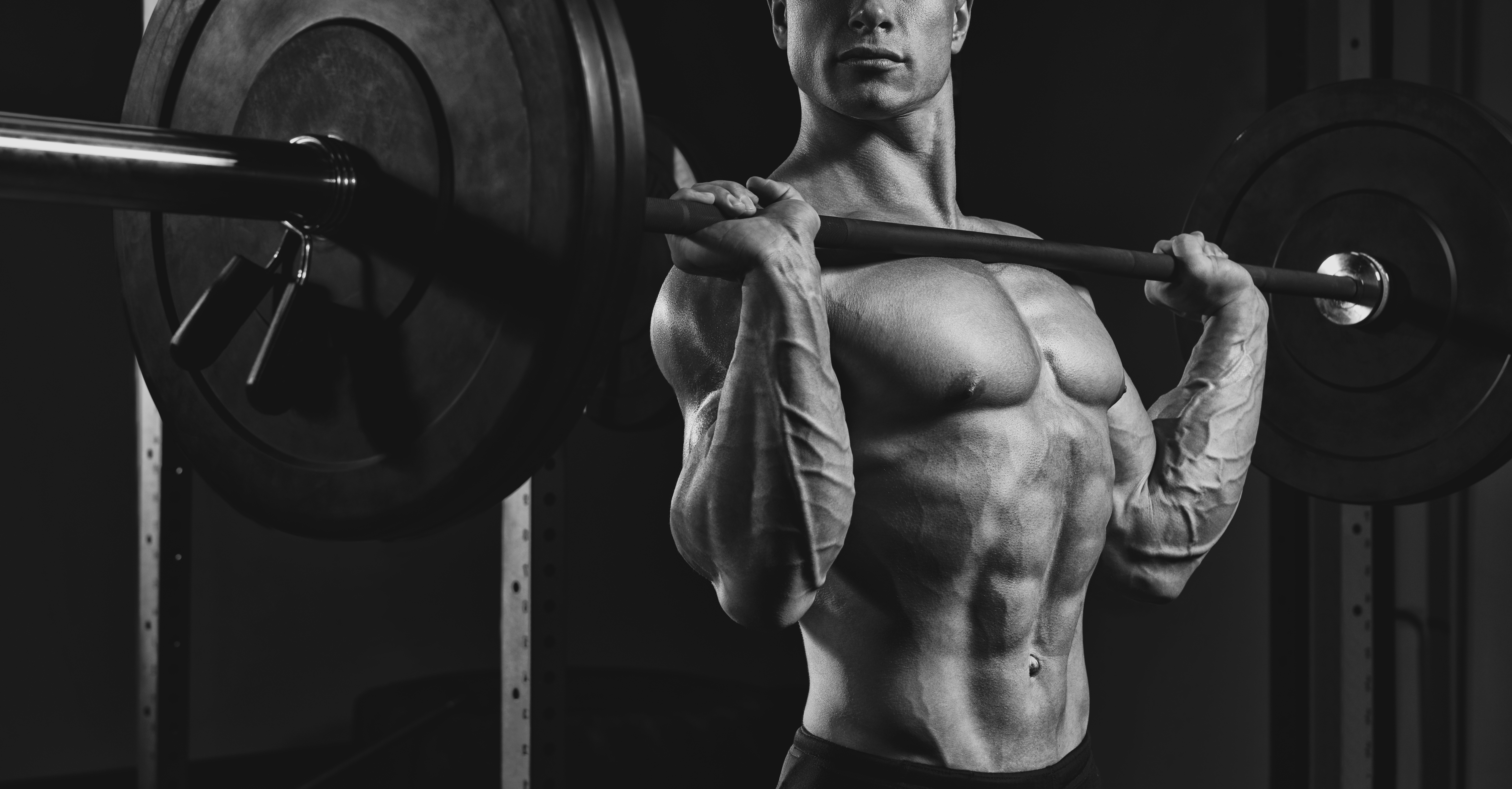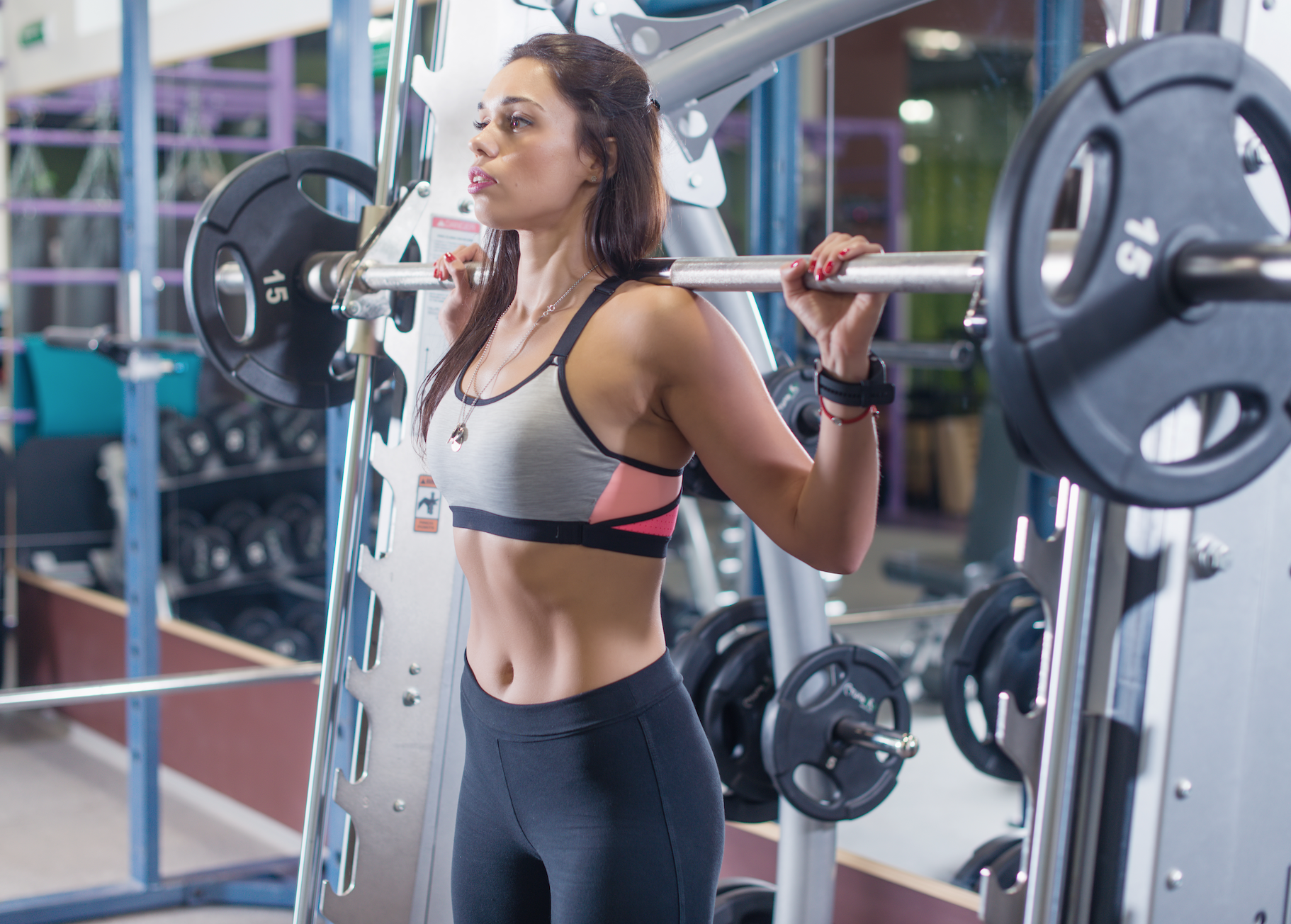
I promise the title of this article isn’t a joke- yes, there are manual treadmills that are great for running. But these next generation manual treadmills are a far cry from the cheap, difficult to use models we’ve seen over the years.
No, these curved running machines are heavy-duty and designed specifically with runners in mind.
The best manual treadmills can actually make you a stronger runner- something traditional motorized treadmills can’t claim. But these treadmills aren’t for everyone.
If you’re looking to join the curved treadmill revolution and add one of these advanced treadmills to your home gym, you’ve come to the right place.
In this review, we’ll go through all the specs you should consider when comparing these curved machines. I’ll also present my 3 top picks based on this criteria.
After reading, you should have a better idea which manual treadmill is the best fit for your home gym (and also whether curved treadmills is something you should invest in period).
Why A Curved Manual Treadmill?
Curved treadmills are the only manual treadmills I’d recommend trying to run on. The cheap, manual treadmills of yesteryear simply don’t cut it when it comes to running.
Traditional manual treadmills aren’t all bad I guess- they d0 have their place.
If you’re looking for a very affordable treadmill for walking, they could make sense. But when it comes to running, these models won’t do.
For one- they come with tiny running surfaces and most have very low weight capacities. They also utilize resting incline settings to help keep the belt moving (this means you’re always walking on an incline).
But since there isn’t a motor, you do end up getting a more intense workout. Especially since many traditional manual treadmills aren’t particularly smooth acting.
But with the creation of the curved deck, a lot of these issues have been fixed.
The curved shape is genius because it basically gives you the advantage of the resting incline old manual treadmills used while allowing you to run on a flat plane.
While running (or walking) on a curved treadmill, your heel strikes the belt near the front curve- as you drive your foot back, you’re essentially pulling the belt downhill, which helps the belt built momentum with each step.
Since the middle of the deck is flat (and the end of the treadmill curves up again), you don’t feel like you’re running on an incline.
The curved shape allows you to get the built moving (and keep it moving) more efficiently. The curve at the back of the deck also helps ensure the belt doesn’t get out of control.
The result is a manual treadmill that doesn’t rely on a fixed incline angle to keep the belt moving smoothly.
And since there aren’t any motors on these treadmills, it’s up to you to keep that belt moving. This has its advantages.
First of all, you’re going to burn a lot more calories than you would on a motorized treadmill – up to 44% more according to TrueForm.
Second, working on a quality manual treadmill can make you a better runner by improving your form- teaching you to utilize the proper muscles (glutes and hamstrings more so than hip flexors).
And finally, curved treadmills don’t require power to operate, making them a more eco-friendly alternative.
Although you can technically use these treadmills for walking, I’m not sure why you would. It would kinda be like getting a 56″ zero-turn riding lawn mower to cut a quarter acre yard.
More treadmill than you need to get the job done.
Curved treadmills are also a bad idea if you have trouble pacing yourself on runs. Since the treadmills don’t have a motor, it’s up to you keep your own pace.
A lot of people (myself included) like motorized treadmills because you can set your preferred pace and the treadmill will ensure you stay at it (or fall off).
If you’re used to running on motorized treadmills and depending on this pacing, you might have a hard time transitioning to a curved treadmill. For this reason, I think curved treadmills are best for folks who run regularly outside.
But this rule certainly isn’t written in stone.
One more thing- since there’s no motor on these treadmills, that means there’s no max speed. You can run as fast as you can on these machines. The only limit is you.
How To Choose A Curved Manual Treadmill
I’m getting tired of typing out “curved manual treadmill”, so let’s call them “CMTs” from now on. Ok, so if you read the above and still think a CMT is a good choice, great. Let’s go over the specs you should consider when trying to find the best one:
Running Surface
The running surface for a treadmill, whether motorized or manual, is the amount of usable belt space you have at your disposal during your workouts. It’s measured in inches, and written as width x length.
Most people would agree that larger is better- I know I’ve never spoken to anyone who preferred feeling cramped on a treadmill.
The running surfaces we see on CMTs is a little different than what we see on traditional motorized treadmills. Typically, we expect a running surface of at least 20″ x 60″ on any high-end home treadmill.
Curved treadmills usually come with a 17″ wide belt, which is significantly more narrow.
If I had to guess, the narrower belt makes it a little easier to keep the belt moving smoothly. If you’re used to motorized treadmills, CMTs might feel really narrow, but all quality models come with the same width.
They do vary when it comes to the length though.
The running surface length on CMTs will vary anywhere between 54″ and 62″. Taller people may want to opt for a longer running surface to ensure they have plenty of space to stretch out.
That said, your running form will be a little different on CMTs (if you’re running efficiently anyway), so you may not need quite as much length as you would on a motorized unit.
Regardless, it’s a good idea to compare running surfaces when looking at manual treadmills.
Warranty
This spec isn’t specific to CMTs, it’s something we should consider regardless of what kind of fitness equipment we’re looking to purchase.
But looking at the warranty is always a good idea. Longer is better, obviously, because when we make a purchase of this magnitude we want some insurance that it’ll last.
Warranties on CMTs are usually broken down into a few different categories:
- Frame
- Parts
- Tread
- Labor
Frame warranties will vary depending on the brand. Lifetime is the best and some models will offer this. Others will offer anywhere between 5-10 years usually.
Parts warranties usually vary between 3-5 years and tread guarantees can go as long as 10 years.
One year on labor is standard (this is how long the manufacturer will pay for the labor cost of fixing your treadmill).
When in doubt, I usually go with the model with the best warranty.
Weight Capacity
Another key spec to consider when comparing CMTs is their weight capacity. Simply put, higher weight limits mean stronger frames and more durable treadmills.
When looking for a treadmill, first and foremost you need to make sure you can safely use it. If the weight limit isn’t high enough to safely accommodate you, you need to keep looking.
If you’re stuck between 2 models, all other things equal, I recommend going with the one that has the higher weight capacity.
Luckily, the best CMTs come with rock-solid frames with high weight capacities. We’re talking 350 lb and higher on these machines.
Features
Curved treadmills are pretty simple devices, you’re not going to find many fancy features on these machines. If you’re looking for HD touchscreens and virtual workouts, a CMT might not be the right fit.
That said, some of these treadmills do come with simple LCD consoles. Some also come with some basic workout programs to choose from.
Many of the consoles on these treadmills simply keep track of the basic workout metrics you’d expect from a treadmill.
When trying to decide on a CMT, consider the console and the features it has to offer and go with the one that you think will work best for your needs.
The 3 Best Manual Treadmills For Running
#1 TrueForm Runner Treadmill
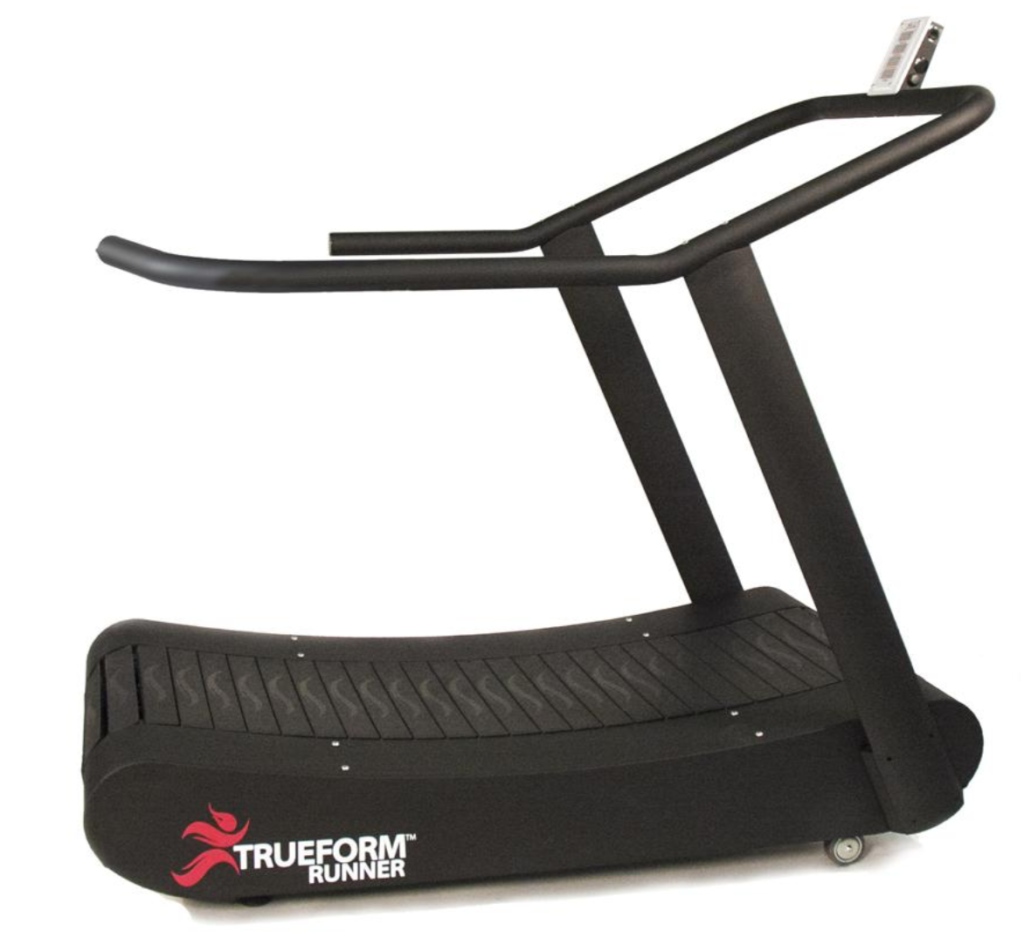
TrueForm’s Runner tops my list for a couple of reasons. First of all, I love how heavy-duty this thing is. I mentioned above that looking at the weight capacity of a treadmill is a great way to get an idea of how well-constructed it is.
This Runner treadmill comes with a max weight capacity of 400 lb for running and 700 lb for walking. These are mind boggling numbers and higher than any weight limit I think I’ve ever seen on any treadmill, curved or not.
With weight limits this high, big guys and gals could easily strap on weighted vests and still safely use this machine.
I didn’t mention treadmill weight earlier, but looking at the weight of a treadmill is another good indicator as to how heavy-duty and well made it is- with heavier equating to a stronger frame/components.
TrueForm’s Runner weighs almost 350 lb, giving it a good 80 lb or so over most other home treadmills on the market. Put another way- this thing is really freakin’ heavy (I mean in that in the best way possible).
When you look at the materials making up this treadmill, it’s easy to see where this weight comes from.
The Runner’s frame is constructed out of 7 gauge steel and the tread is made out of a high-end rubber that comes from Smith & Wesson (yup, the very same Smith & Wesson famous for their firearms).
This treadmill is hand welded right here in the USA- no outsourcing allowed on this model.
Speaking of tread, with the Runner you get options. You can stick with the standard rubber tread mentioned above, or you can swap it out for a turf or running track tread (at additional cost).
This is really cool because football or soccer players can run on this treadmill with cleats on- talk about specificity of training.
In terms of function, the Runner is smooth acting- the shallow curve and over 100 sealed steel ball bearings make it easy to get the belt moving and keep in moving comfortably without losing control.
The biggest downside is that the running surface on this treadmill is on the smaller side (17″ x 54″).
Otherwise this treadmill is pretty flawless. It’s backed by a great warranty and does come with a simple LED console for tracking your workout metrics.
This treadmill is pricey, but if you’re looking for the best manual treadmill for running, you found it. See full review.
#2 Assault AirRunner Treadmill
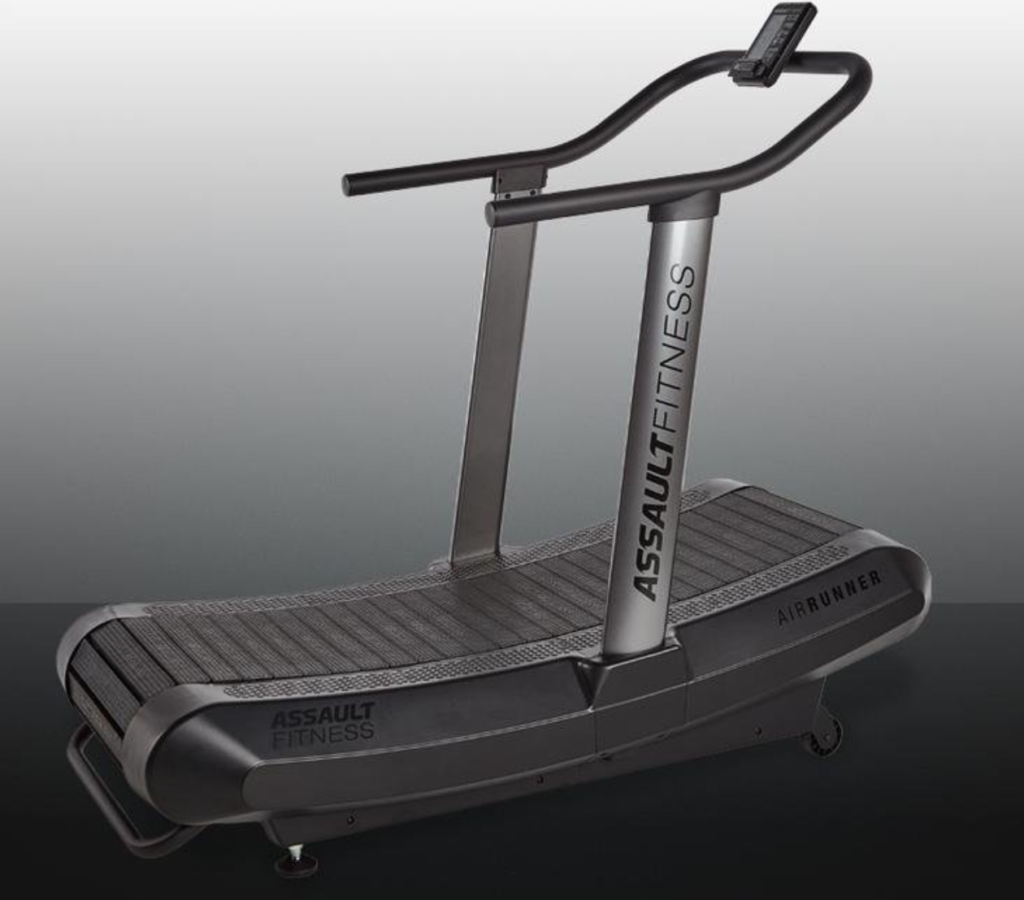
Assault Fitness’s AirRunner takes the second spot on this list (and there’s no shame finishing second to TrueForm’s Runner). You might recognize the Assault name from their air bikes- the Classic and AirBike Elite.
Assault Fitness is a no BS brand that’s earned a stellar reputation for making great equipment and their AirRunner is definitely worthy of the Assault name.
The AirRunner isn’t quite as heavy-duty as the Runner mentioned above, but it’s still very solid and stable.
This curved treadmill comes with a user weight capacity of 350 lb and a total weight of about 280 lb- both of which are respectable in their own right.
The AirRunner isn’t as heavy-duty as the Runner, but it is longer.
This treadmill comes with a running surface that measures 17″ x 62″. The extra length could come in handy for the taller runners out there who are worried about having to shorten their stride at faster speeds.
You don’t get any tread options on this model, but the tread you do get is made out of a high-end rubber and slatted.
This curved treadmill also comes with a small digital console, but this one is a little more sophisticated. Unlike the one found on the Runner, this console comes with a few built-in workout programs as well as the ability to track heart rate.
The biggest downside to this treadmill is probably the warranty, which is definitely lacking when compared to the Runner, but this treadmill is also significantly more affordable (about a $1000 cheaper).
Overall, if you’re looking for a great curved treadmill that won’t break the bank quite as much as the Runner, Assault’s AirRunner is a great choice. See full review.![]()
#3 TrueForm Trainer Treadmill
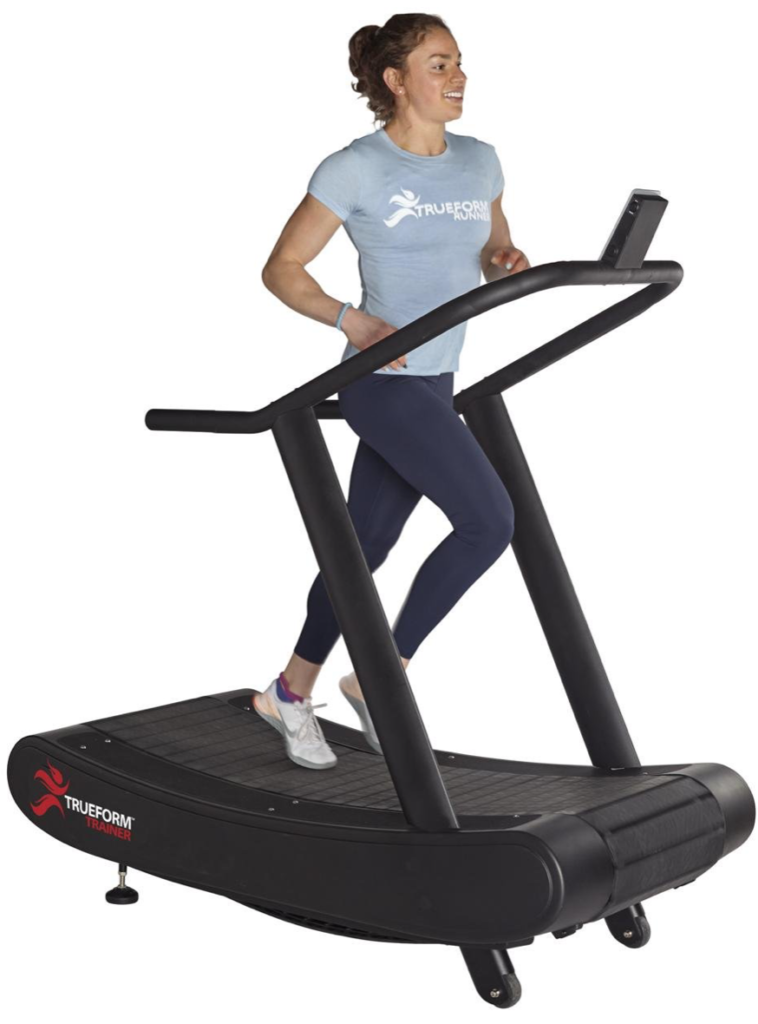
The Trainer is another curved model by the same company that provides the Runner, that landed the top spot on this list. TrueForm truly specializes in these treadmills- after all, manual treadmills is all they do.
The Trainer is basically just a lighter version of their incredibly heavy-duty Runner.
The dimensions for the Trainer are almost identical to the Runner (although the Runner is a little wider), but the Trainer weighs about 70 lb less.
This treadmill comes with a solid steel frame, but it’s not the same 7-gauge steel used in the Runner. It’s thinner, which reduces the overall weight of this machine.
It’s also worth noting that the Trainer isn’t handmade here in the USA like the Runner is. No, this model is outsourced and built in Korea, which will cut down on cost as well.
The belt on this model is lighter too, which some users report is a good thing because it makes it a little easier to get the belt moving.
You don’t get to choose your tread material on the Trainer, but you still get a high-end, slatted rubber tread that should hold up well.
The running surface on this model is the same as the Runner’s- 17″ x 54″.
The console on this treadmill is a little more sophisticated than the one we see on the Runner and is Polar chest strap compatible for heart rate monitoring.
The warranty is the last department the Trainer really differs from the Runner (well, except for price). The warranty on this treadmill isn’t nearly as long.
But this treadmill does use the same shallow curve angle and hundred or so covered steel ball bearings to ensure smooth operation during your workouts.
If you like the Runner and are looking for a more affordable alternative, the TrueForm Trainer is a great choice. It’s a lighter-duty machine, but it’s still tough enough to handle the workouts most mortals can throw at it. See full review.
Final Thoughts
Curved treadmills are the only manual treadmills designed for serious running. The lightweight, inclined manual treadmills that cost ya a couple hundred bucks just aren’t gonna cut it.
When considering a curved manual treadmill, I recommend you compare the running surfaces, weight capacities, and warranties. These are the top specs that are going to give you a great idea as to the quality of the treadmill.
After that, it’s a good idea to look at the console and any other features they may offer and try to find the one that checks as many boxes as possible on your wishlist.
The 3 treadmills on this list were all picked because they score highly on the criteria we discussed at the beginning.
If you ask me, TrueForm’s Runner is the best manual treadmill for running currently on the market.

